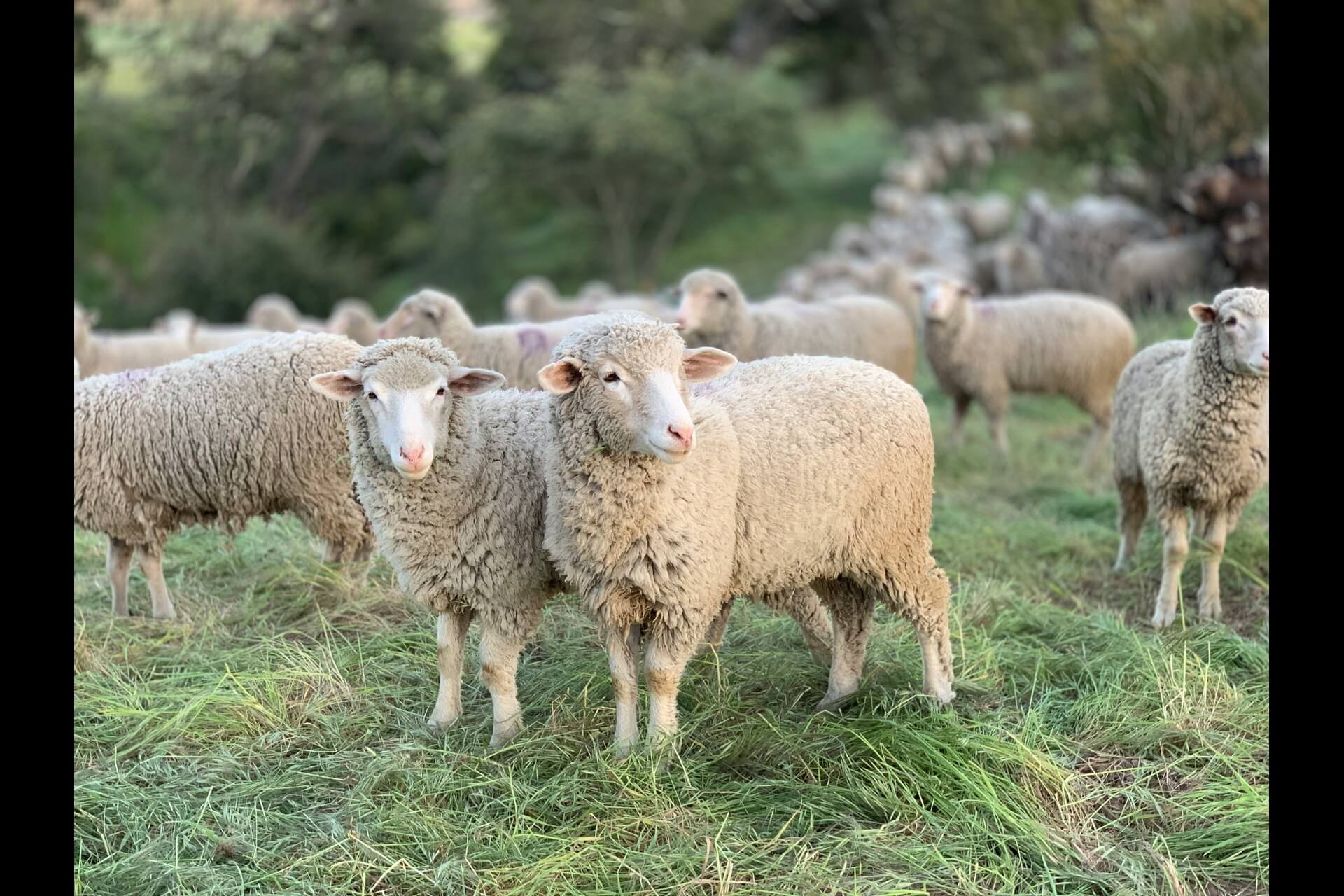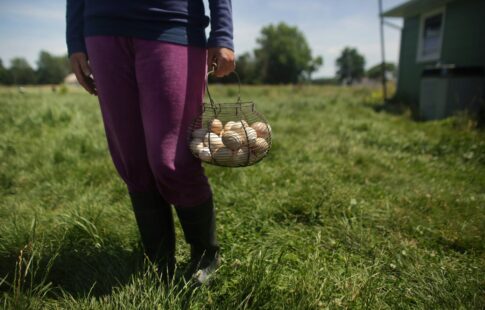
Common Mistakes in Sheep Breeding and How To Avoid Them
We are reader-supported. When you buy through links on our site, we may earn affiliate commission.
Sheep breeding — an age-old practice that dates back thousands of years — is experiencing a resurgence among younger generations, particularly those who value sustainable farming and natural living. As interest in small-scale, environmentally responsible farming grows, so does the focus on sheep breeding as a means to produce high-quality wool, meat and dairy products. However — like any agricultural endeavor — sheep breeding comes with its own challenges, especially for those new to the practice.
Explore some of the most common mistakes in sheep breeding and learn practical advice on avoiding them, ensuring a healthy and productive flock.
- Neglecting Genetic Diversity
One of the most significant mistakes a sheep breeder can make is neglecting the importance of genetic diversity within their flock. While it may be tempting to rely on a few select rams and ewes that exhibit desirable, over-reliance on these animals can lead to inbreeding. This situation occurs when closely relayed sheep mate, resulting in genetically similar offspring with a higher risk of inheriting harmful recessive traits.
Inbreeding can have several negative consequences. It can affect fertility, lead to weaker immune systems and increase the likelihood of congenital disabilities. Over time, a lack of genetic diversity can also result in a flock that is less adaptable to changes in the environment, such as disease outbreaks or shifts in climate.
How To Avoid This:
Breeders should prioritize genetic diversity when selecting breeding stock. This setup can be achieved by sourcing rams and ewes from different bloodlines and — if possible — from other geographic regions. Additionally, introducing new genetics into the flock every few years can help maintain a healthy level of diversity. By doing so, breeders can reduce the risk of inbreeding and promote a stronger, more resilient flock.
- Poor Timing of Breeding Seasons
Timing is everything when it comes to successful sheep breeding. Another common mistake is failing to properly time the breeding season, which can lead to a host of challenges — from off-season lambing to low birth weights. Breeding sheep at the wrong time of the year can result in lambs being born during unfavorable conditions — such as extreme cold or heat — impacting their survival rates and overall health.
Poor timing can also strain the resources available to the flock. For example, if lambs are born during a period of low forage ability, their mothers may struggle to produce enough milk, leading to undernourished lambs and slower growth rates. Moreover, off-season lambing can complicate flock management, requiring more intensive care and potentially higher costs.
How To Avoid This:
It’s important to plan breeding seasons carefully. In many regions, sheep are typically bred in the fall, with lambs born in the sprint when conditions are more favorable. This timing allows lambs to benefit from the fresh, abundant forage available during spring and summer, supporting healthy growth and development. By aligning breeding seasons with natural cycles, breeders can improve lamb survival rates and ensure their flock thrives.
- Inadequate Nutrition for Breeding Stock
Nutrition is critical in the fertility and health of breeding sheep, yet it’s an aspect often overlooked or misunderstood. Inadequate nutrition can lead to many problems, including low conception rates, weak lambs and poor milk production. Ewes that are undernourished during pregnancy are more likely to give birth to lambs with low birth weights, affecting their chances of survival and long-term productivity.
Breeding rams, too, require proper nutrition to maintain their fertility and overall health. A well-balanced diet ensures that rams have the energy and stamina needed for successful mating while supporting their immune systems and reducing the risk of illness.
How To Avoid This:
Breeders should focus on providing a nutritionally balanced diet tailored to the needs of their breeding stock. This strategy includes ensuring ewes receive adequate energy, protein, vitamins, and minerals before and during pregnancy.
It’s also vital to adjust feeding practices based on the specific needs of the flock at different stages of the breeding cycle. Supplementing the diet with high-quality forages, grains, and minerals can help support the health and productivity of breeding sheep, ultimately leading to stronger, healthier offspring.
- Ignoring Health Screenings and Disease Management
A proactive approach to health management is essential for any successful sheep breeding program. Unfortunately, many breeders neglect regular health screenings and disease prevention measures, which can have serious consequences for the flock.
Ignoring health screenings can spread diseases within the flock, some of which can have devastating effects on breeding outcomes. For example, diseases such as ovine brucellosis can reduce fertility and result in aborted pregnancies, while internal parasites can weaken sheep and impair their reproductive capabilities.
How To Avoid This:
Breeders should consider implementing a comprehensive health management program. This strategy should include regular veterinary check-ups, vaccinations and parasite control measures. Additionally, new animals introduced to the flock should be quarantined and screened for diseases before mixing with the rest of the flock. By staying vigilant and taking proactive steps to manage the health of their sheep, breeders can minimize the risk of disease and ensure their flock remains healthy and productive for many years.
- Lack of Record-Keeping and Data Management
Accurate record-keeping is a cornerstone of effective sheep breeding — however, it’s an area where many breeders fall short. Without detailed records, it’s challenging to track the performance of individual animals, monitor their health and fertility trends, or make informed decisions about breeding pairings.
Poor record-keeping can lead to a range of problems — from unintended inbreeding to missed opportunities for improving flock productivity. For example, without records of past breeding results, it can be difficult to identify which ewes and rams consistently produce high-quality offspring or to recognize patterns in health issues that may need to be addressed.
How To Avoid This:
Breeders should establish a system for maintaining detailed records of their flock. This data center can include information on breeding dates, health screenings, vaccinations, lambing outcomes, and any other notable traits or behaviors of individual sheep.
Digital tools and software solutions are available to help streamline this process, making organizing and accessing data easier. By keeping thorough records, breeders can set themselves up for success as they can make more informed decisions, improve the efficiency of their breeding program and ultimately achieve better results in the long run.
Breeding Success Starts With Avoiding Common Mistakes
Sheep breeding is a rewarding but complex endeavor that requires careful planning, attention to detail and a commitment to best practices. By being aware of these common mistakes, breeders can take proactive steps to avoid these pitfalls.
Success in sheep breeding doesn’t happen overnight, but with the right approach, building a healthy, productive flock that contributes to a more sustainable and resilient agricultural system is possible. Staying informed and vigilant can make all the difference in supporting a thriving flock.
Share on
Like what you read? Join other Environment.co readers!
Get the latest updates on our planet by subscribing to the Environment.co newsletter!
About the author

Jane Marsh
Starting from an early age, Jane Marsh loved all animals and became a budding environmentalist. Now, Jane works as the Editor-in-Chief of Environment.co where she covers topics related to climate policy, renewable energy, the food industry, and more.





